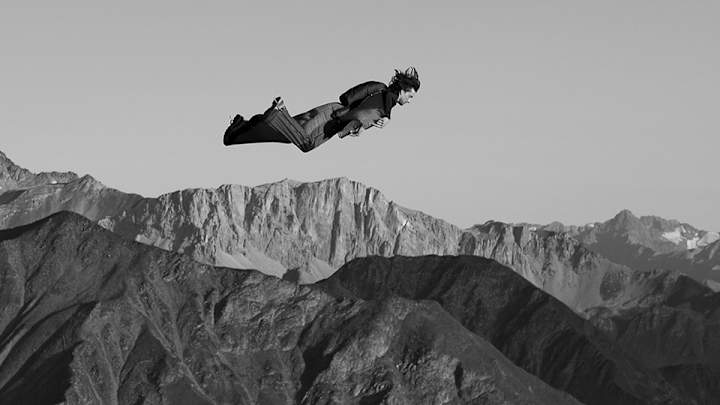Extreme Exposure: Tribute to Dean Potter, the rise of Filipe Toledo, more

Welcome back to Extreme Exposure, where we bring you the best news and photography from the world of action and outdoor sports. This week we take a look at the life of climbing icon Dean Potter while recognizing an icon-in-the-making in Filipe Toledo.
Remembering a Legend
When describing climbing legend Dean Potter, the word conventional would not apply.
Tragically, Potter, died Saturday, May 16 after a BASE jumping accident in his beloved Yosemite National Park in an area known as Taft Point. He and fellow jumper Graham Hunt were using wingsuits when they disappeared and failed to report in following a descent from the 7,500-foot overlook. Their bodies were found Sunday.
Potter’s rise began in the late 1990’s when he completed solo and free-solo climbs (no ropes or fixed gear) of Yosemite’s classic routes. The New Hampshire native’s career would be one of constant evolution, as he moved from climbing to slacklining—think tight rope walking on webbing—to BASE jumping.
But Potter seemingly added a twist to everything. He’d regularly slackline between fixed points thousands of feet off the ground (highlining), like he did Yosemite’s Lost Arrow Spire and China’s Enshi Grand Canyon. In 2008 he began free climbing using a parachute for safety—a technique he called free-basing—first practicing this radical technique on the Eiger’s North Buttress, an approach he ironically dubbed, “turning dying into flying.”
His career was not without controversy. In 2006, he was dropped by sponsors when he free-soloed Delicate Arch in Utah’s Arches National Park, forcing Park brass to enforce stricter rules to protect the fragile sandstone landmark. But to Potter, this ascent—and other impressive feats during his career—was about progression, a word that more aptly describes his dynamic persona.
Prone to Lead
Southern California’s Jack Bark is leading a paddleboard resurgence—original paddleboarding that is, practiced on narrower boards while lying prone or kneeling. Bark—pictured in the barrel during a free surf—won the technical race last weekend at the ISA World StandUp Paddle and Paddleboard Championship in Sayulita, Mexico, helping Team USA capture the gold medal.
Despite being a mouthful to pronounce, the event features both SUP and prone and is now one of the most high-profile paddling competitions in the world and one the ISA hopes is a precursor to Olympic inclusion. Bark’s just appreciative of the stage it gives his sport.
“(Prone) paddleboarding has been around way longer then SUP,” he says. “It's very traditional and it's starting to reemerge. It's kind of been hidden away, but now it's growing again, and fast.”
Man on Fire
Filipe Toledo has left absolutely no doubt: he’s the most in-form surfer on the planet right now. And because of his ridiculously consistent air game, many in the surfing world are calling him one of the best small wave surfers ever. In fact, after winning the Oi Rio Pro in his home country this weekend, his full frontside aerial rotations are becoming so commonplace in competition, they’re almost like regular turns for other surfers.
Toledo easily defeated Australia’s Bede Durbidge in the final and sits a mere 550 points behind fellow countryman Adriano De Souza in the World Title hunt. The middle part of the year is sure to test the 20-year-old’s all-around game, though, as the Tour moves to waves of consequence like Fiji’s Cloudbreak and Tahiti’s Teahupoo.
Ice Age
Last week a group of Hood River, Oregon skiers and snowboarders hiked 12 miles into the Mount Hood backcountry to ride the Sandy Glacier Ice Caves. The trek required crampons, ice axes, helmets and other survival gear. But the reward was one of the most unique backcountry kickers caught on film this season.
